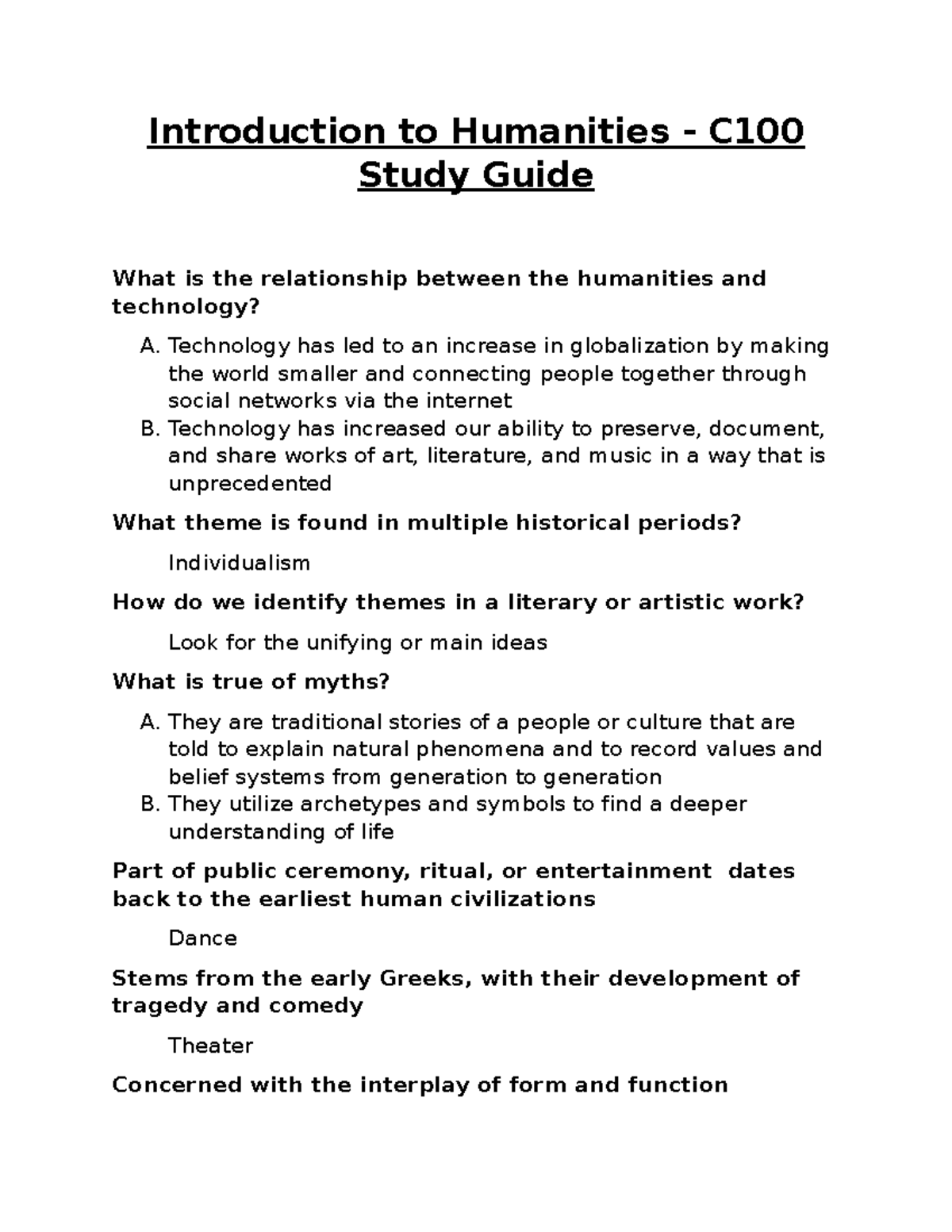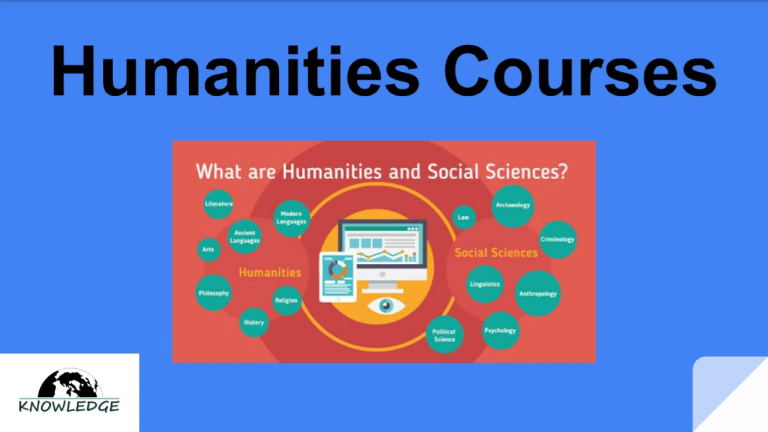Introductory humanities courses serve as the gateway for first-year students to explore the vibrant world of arts and humanities programs. These courses are vital for engaging first-year students through innovative teaching methods and contemporary topics, which can reignite their passion for learning across a diverse humanities curriculum. As the importance of humanities education grows in today’s complex society, institutions like Harvard are spearheading this initiative to make the discipline more attractive and relevant. By emphasizing creativity and critical thinking, introductory humanities courses aim to ensure that students grasp the relevance of their studies in understanding human experiences. Harvard humanities courses, in particular, focus on enticing new learners with engaging content that connects deeply to their interests and societal needs.
Beginning your academic journey with foundational courses in the humanities introduces students to vital discussions surrounding art, culture, and philosophy. These essential programs are designed to captivate new learners and cultivate an appreciation for diversified knowledge, allowing them to investigate the human experience more profoundly. Through motivating coursework, institutions are recognizing the need to foster enthusiasm among first-year students, ensuring that they see the value in humanities education. A rich humanities curriculum not only enhances critical thinking and empathy but also informs students about the intricate relationships between various artistic and cultural expressions. With an array of introductory arts and humanities options available, first-year scholars are better equipped to navigate the complexities of human thought and creativity.
The Importance of Humanities Education in Engaging First-Year Students
Humanities education plays a pivotal role in shaping well-rounded individuals capable of critical thinking and empathy. As Dean Sean Kelly points out, many first-year students enter college with an interest in the arts and humanities; however, nearly half of them change their minds by the time they declare their concentrations. This indicates a disconnect between students’ initial enthusiasm and their later academic paths. Engaging first-year students through innovative humanities courses is essential not only for fostering a deeper understanding of human culture but also for ensuring that these programs thrive in the face of declining enrollments. By rethinking the approach to introductory courses, higher education institutions can reinvigorate interest and demonstrate the intrinsic value of humanities education, giving students the tools to navigate complex societal issues and personal inquiries alike.
In recent years, there has been a growing recognition of the importance of humanities education in cultivating critical thinking, cultural awareness, and ethical reflection. Engaging first-year students through dynamic and accessible introductory courses can help bridge the gap between high school and university education. These courses not only introduce foundational concepts but also invite students to explore their own beliefs, values, and experiences. By providing students with an engaging curriculum that emphasizes interaction and inquiry, institutions like Harvard are addressing the needs of today’s learners and preparing them for diverse futures. The intrinsic value of a humanities education extends beyond academic performance; it fosters a generation of leaders who can thoughtfully engage with the world around them.
Innovative Introductory Humanities Courses at Harvard
Harvard’s initiative to launch nine new introductory humanities courses reflects a transformative approach to engaging students in these fields. As part of a broader strategy to combat enrollment declines, these courses are designed to resonate with first-year students by directly addressing their interests and perspectives. For instance, courses such as “Introduction to the Medical and Health Humanities” and “Migration and Border Crossing in Film and Photography” explore relevant social issues while inviting students to participate in rich discussions. The goal is to ignite a passion for the humanities by connecting students with material that feels significant and impactful to their lived experiences, thus ensuring that they remain engaged throughout their academic journey.
This innovative curriculum is a thoughtful response to the historical shifts in the humanities landscape, moving away from prescriptive ‘great works’ lists and instead focusing on contemporary relevance. By offering dynamic courses that engage with current cultural conversations, professors aim to create an environment where students feel empowered to think critically and creatively. The introduction of cross-disciplinary themes, such as technology and humanity, allows students to see the interplay between various fields of study, deepening their understanding and appreciation of the humanities. As these introductory courses roll out in the upcoming academic year, they signify a renewed commitment to bringing the vitality of arts and humanities education to life.
Harnessing Interest Through the Arts and Humanities Programs
The restructuring of arts and humanities programs at Harvard aims to harness early interest among students, capitalizing on the unique perspectives they bring to their studies. By thoughtfully curating introductory courses that highlight diverse artistic expressions and scholarly inquiries, the program seeks to nurture a lifelong appreciation for the humanities. For instance, classes like “Bob Dylan the Classic” and “Reading for Fiction Writers” delve into topics that capture the imagination of students from various backgrounds. Through these engaging offerings, students are encouraged to find their voices and explore critical themes in literature and the arts.
Moreover, these programs recognize the importance of storytelling as a foundational human practice. As professors collaborate to merge critical analysis with creative writing, students learn that becoming adept readers is fundamental to becoming skilled writers. This integrated methodology not only enhances literary appreciation but also encourages students to connect with the material on a personal level. By weaving together inventive narratives and scholarly critique, arts and humanities programs are paving the way for a more engaging educational experience that resonates with the needs and aspirations of today’s students.
Combatting Enrollment Declines in the Humanities
The alarming trend of declining enrollment in humanities disciplines has prompted many institutions, including Harvard, to take action. The new introductory courses are a direct response to research indicating that a significant number of first-year students who initially express an interest in the humanities end up abandoning their interest. By reimagining these courses to be more accessible and relevant, professors aim to attract and retain students within these vital fields of study. This proactive approach not only addresses enrollment issues but also reinforces the value of a humanities education in shaping thoughtful, engaged citizens.
Addressing the drop in enrollment requires a nuanced understanding of the factors influencing students’ decisions. Many students are concerned about future job prospects and may perceive the humanities as less practical than other fields. By demonstrating the importance of critical thinking, creativity, and cultural awareness – skills honed through the humanities – educators can articulate the long-term benefits of these programs. Engaging students through contemporary issues and accessible content makes the choice to study the humanities a compelling one, reaffirming their relevance in today’s complex world.
The Role of Introductory Humanities Courses in Student Engagement
Introductory humanities courses serve as essential gateways for students to explore their interests and connect with the broader intellectual community. By embracing diverse themes and innovative teaching methods, these courses are designed to captivate first-year students from the outset. For instance, classes that tackle pressing contemporary issues such as migration and technological impact encourage students to consider their place in the world. Such engagement is crucial for fostering a deeper commitment to the humanities and ensuring that students recognize the profound influence of human culture on their lives.
Furthermore, these courses can enhance the overall academic experience by promoting interdisciplinary connections. By exposing students to various fields of study and encouraging them to draw parallels between literature, philosophy, and the arts, introductory humanities courses lay the groundwork for a richer educational experience. The workshops and discussions foster collaborative learning and peer interactions, allowing students to refine their perspectives and articulate their thoughts. Ultimately, this communal approach enhances student engagement, making the humanities an inviting field for exploration and discovery.
Curating an Engaging Humanities Curriculum for First-Year Students
Curating an engaging humanities curriculum involves selecting texts and themes that resonate with the experiences and interests of first-year students. By focusing on contemporary issues and diverse voices, courses can challenge traditional interpretations while also opening opportunities for students to engage with material that directly reflects their lives. For example, curriculums that incorporate discussions around modern technology and its implications on society invite students to critically analyze the effects of their own experiences. This alignment with students’ realities is key to rekindling interest in the humanities.
Moreover, the success of these course offerings hinges on their ability to incorporate collaborative learning methodologies. Encouraging students to participate in group discussions enhances their critical thinking skills while fostering a sense of community within the classroom. Classes designed to emphasize interactive problem-solving, ethical dilemmas, and cultural analysis allow students to develop a holistic understanding of the humanities. By ensuring that the curriculum is student-centered and interactive, departments can create an environment where first-year students feel empowered to contribute their own insights and perspectives.
Transforming the Student Experience Through Collaborative Learning
Collaborative learning plays a transformative role in the student experience within humanities courses. By fostering an environment where students can work together to analyze texts, discuss ideas, and share personal perspectives, collaboration becomes a vital tool for deeper engagement. This collective approach mirrors the communal nature of the humanities, where discussions around texts often involve diverse interpretations and viewpoints. Through collaborative activities, students enhance their understanding of the material while also developing essential communication and teamwork skills that are valuable in any field.
Additionally, this model of learning can be particularly effective for first-year students. The transition to college life can be daunting, and collaborative learning provides a support system that eases this adjustment. By working closely with peers, students can form meaningful connections and develop a sense of belonging within the humanities community. As they navigate their academic journeys together, they are more likely to remain engaged and committed to their studies, thus combating the trends of declining enrollment and interest in humanities education.
Understanding the Global Context of Humanities Education
As the world becomes increasingly interconnected, understanding the global context of humanities education is crucial. Humanities courses that explore transnational issues, cultural exchanges, and perspectives from different societies help students gain a comprehensive understanding of our shared human experience. This is particularly relevant as discussions surrounding migration, globalization, and cultural identity become more prevalent in academic settings. By situating humanities education within a global framework, students learn to appreciate diverse perspectives and recognize the relevance of historical and cultural contexts in shaping contemporary issues.
Moreover, incorporating a global perspective into the humanities curriculum enriches students’ analytical skills and deepens their understanding of the complexities surrounding cultural narratives. When students are exposed to a variety of voices and experiences, they develop the ability to critically engage with the underlying themes that drive human behavior. This aligns with the objective of introductory humanities courses to not only introduce foundational concepts but also to instigate thoughtful dialogue around pressing global challenges. By embracing this broader viewpoint, students emerge as informed global citizens equipped to contribute meaningfully to conversations that shape our world.
Frequently Asked Questions
What are introductory humanities courses and why are they important in a humanities curriculum?
Introductory humanities courses are foundational classes designed to engage first-year students in the arts and humanities. They play a crucial role in a humanities curriculum by providing students with essential skills in critical thinking, analysis, and interpretation of diverse cultural and philosophical ideas, thereby fostering a deeper understanding of human experiences and societal values. The importance of humanities education extends beyond academia, influencing how individuals perceive and interact with the world.
How does Harvard’s initiative to enhance introductory humanities courses address declining enrollment in arts and humanities programs?
Harvard’s initiative to revamp introductory humanities courses aims to counter declining enrollment by creating engaging and relevant content that resonates with first-year students. By introducing innovative courses that connect students with critical themes and modern contexts, the initiative seeks to rekindle interest in arts and humanities programs, ultimately inspiring more students to pursue their interests in these fields.
What changes are being made to engaging first-year students in humanities education?
To effectively engage first-year students in humanities education, new introductory courses have been designed that reflect contemporary issues and diverse perspectives in the arts and humanities. This approach addresses previous shortcomings in course design by making the material relatable and accessible, thereby ensuring that students can see the intrinsic value of their studies and how these subjects enrich their understanding of the human condition.
What types of themes are explored in Harvard’s new introductory humanities courses?
Harvard’s new introductory humanities courses cover a variety of themes that aim to engage students in meaningful discussions. Topics such as the intersection of health and humanities, migration and cultural narratives, and the impact of technology on humanity are explored. This breadth of themes encourages students to connect their personal experiences with larger societal issues, enhancing their overall learning experience.
How can introductory humanities courses impact students’ future academic and personal lives?
Introductory humanities courses can significantly impact students’ future academic and personal lives by equipping them with critical thinking skills, cultural awareness, and ethical reasoning. These courses encourage students to engage with fundamental questions about existence, society, and morality, fostering a lifelong appreciation for arts and humanities, which can enrich their professional trajectories and personal growth.
What role does reading literature play in introductory humanities courses?
Reading literature in introductory humanities courses is essential as it not only enhances students’ analytical skills but also aids in understanding complex human emotions and societal themes. Literature serves as a vehicle for exploring diverse perspectives, which can deepen students’ empathy and cognitive abilities, ultimately contributing to their development as informed and thoughtful individuals.
Can introductory humanities courses help students understand the intrinsic value of humanities education?
Yes, introductory humanities courses are designed to help students appreciate the intrinsic value of humanities education. By engaging with great literature, art, and philosophical texts, students can explore the relevance of these subjects in understanding human experiences, facilitating personal growth, and fostering a greater appreciation for cultural diversity and historical contexts.
What innovative teaching methods are being employed in new introductory humanities courses?
The new introductory humanities courses utilize innovative teaching methods such as interdisciplinary approaches, collaborative learning, and the integration of modern technology to enhance student engagement. Professors are focusing on experiential learning by incorporating discussions, creative projects, and critical analysis, making the courses dynamic and interactive.
What are the anticipated outcomes of revitalizing introductory humanities courses at Harvard?
The anticipated outcomes of revitalizing introductory humanities courses at Harvard include increased enrollment, heightened student engagement, and a stronger appreciation for the humanities as a vital component of education. By focusing on relevant themes and fostering a supportive learning environment, these courses aim to transform students’ perceptions of the humanities and inspire them to pursue further studies in these fields.
| Key Point | Details |
|---|---|
| New Introductory Courses | Nine new courses in the Division of Arts and Humanities starting in the fall, aimed at engaging first-year students. |
| Declining Enrollment Issue | Only about 12% of first-years express interest in arts and humanities; half switch concentrations, highlighting a lack of engagement in existing courses. |
| Course Topics | Courses will include topics like Medical Humanities, Cultural Context, and Migration in Film. |
| Philosophy Department’s Success | The Philosophy Department increased concentrators by shifting focus to fundamental human questions rather than just preparing for PhDs. |
| Integration of Critical and Creative Studies | Courses like ‘Reading for Fiction Writers’ will merge critical reading and creative writing to enhance student skills. |
| Intrinsic Value of Humanities | The initiative is aimed at emphasizing the intrinsic value of the humanities beyond just their practical applications. |
Summary
Introductory humanities courses are a crucial aspect of university education that seeks to cultivate a deeper understanding of the human experience. With the advent of new courses aimed at addressing declining interest in arts and humanities, students now have an opportunity to engage more authentically with these disciplines. By introducing courses that blend critical inquiry with creative expression, such as ‘Reading for Fiction Writers’ and ‘Introduction to the Medical and Health Humanities’, universities can foster an environment that values both the theoretical and practical aspects of the humanities. This initiative not only hopes to increase enrollment but also aims to instill a lasting appreciation for the intrinsic value of humanities in shaping human thought, culture, and identity.




